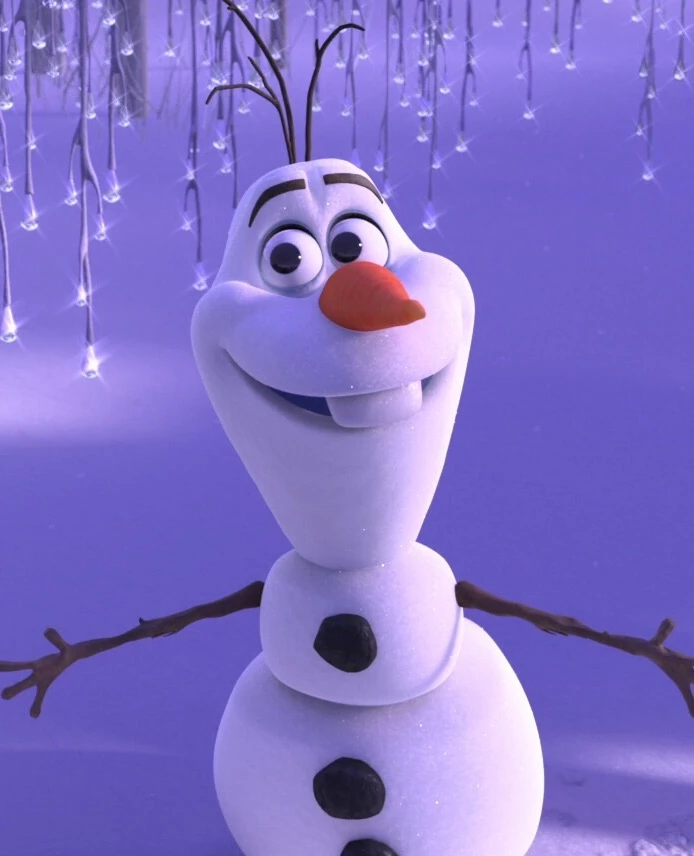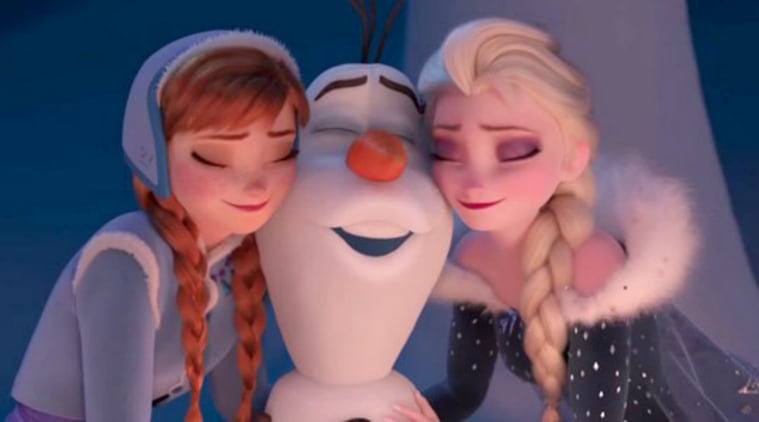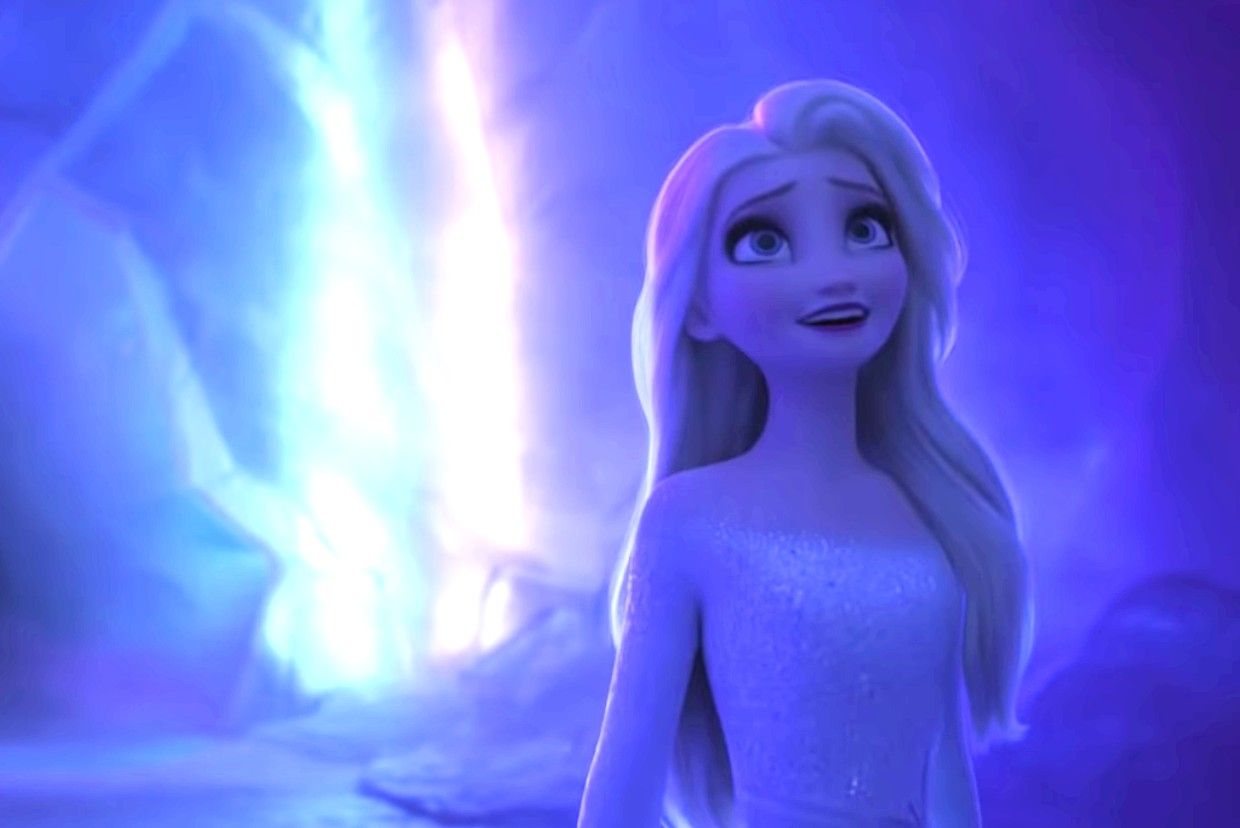 Hi, everyone! I’m Dakota Love, manga writer and college girl. I grew up around many United States Veterans, spending a lot of time every week at the VA hospital with my parents and brother. While we were there, I was inspired by this world of heroes. I saw people overcome the most devastating disabilities, as the veterans strove to walk again, use new prosthetics, and adapt to life after the war. I learned pretty young that a disability is just a thing. I saw quadruple amputees adapt and enrich the world around them with flying colors. But the thing all the veterans struggled with the most was post-traumatic stress disorder, more commonly known as PTSD. Here, I’d like to explain PTSD using the Combat Trauma Healing Manual by Chris Adsit and characters from Disney’s hit movie Frozen.
Hi, everyone! I’m Dakota Love, manga writer and college girl. I grew up around many United States Veterans, spending a lot of time every week at the VA hospital with my parents and brother. While we were there, I was inspired by this world of heroes. I saw people overcome the most devastating disabilities, as the veterans strove to walk again, use new prosthetics, and adapt to life after the war. I learned pretty young that a disability is just a thing. I saw quadruple amputees adapt and enrich the world around them with flying colors. But the thing all the veterans struggled with the most was post-traumatic stress disorder, more commonly known as PTSD. Here, I’d like to explain PTSD using the Combat Trauma Healing Manual by Chris Adsit and characters from Disney’s hit movie Frozen.
According to Chris Adsit, trauma is a common reaction to an uncommon event. TRauma can be caused by many things – someone mugging you, a natural disaster, or losing someone you love. PTSD is triggered when a person is unable to process the traumatic event. And that’s just what happened to Elsa.
Elsa and Anna are innocently playing, when a terrible accident causes Anna to get hit with an ice blast. Elsa’s parents, who are panicking, sought help from an ancient troll. Elsa is already scared, and when the troll shows her a vision of the worst possible future, Elsa’s fear gets even stronger.

Elsa’s parent isolate her, which is the last thing on the planet they should do. Elsa can’t talk about her trauma to her sister, her most beloved companion, or even a trusted servant or nanny. Elsa is unable to process her fears, which keep replaying in her head over and over. Instructed to “conceal, not feel,” she bottles up her emotion, and becomes afraid to do much of anything. She is haunted by questions like “why did this happen?” and “what if it happens again?” Elsa is alone, trapped in a constant state of hyper-vigilance to make sure that her powers don’t hurt anyone else. Elsa now has PTSD.
Years pass, and Elsa’s PTSD gets even worse. And while Elsa has PTSD, Anna suffers from a similar, yet very different, ordeal. Hit in the head by ice, and then mind-wiped, Anna has a lack of coordination, lack of balance, an extremely overly-impulsive attitude, poor judgement, compulsive behavior, and lack of memory. Anna has a traumatic brain injury.
 A traumatic brain injury (or TBI) has many similarities to PTSD. Anna isn’t traumatized, but she is also stuck replaying events. Her injury causes her mind to loop, and she starts and ends every single day of her life trying to figure out what happened to her sister. She also has trouble understanding her emotions, which is why she falls for Prince Hans when he pretends to be kind.
A traumatic brain injury (or TBI) has many similarities to PTSD. Anna isn’t traumatized, but she is also stuck replaying events. Her injury causes her mind to loop, and she starts and ends every single day of her life trying to figure out what happened to her sister. She also has trouble understanding her emotions, which is why she falls for Prince Hans when he pretends to be kind.
At the ball after Elsa’s coronation, the PTSD comes to a head. Not even having her questionable parents to talk to about her powers, Elsa has become even more isolated, which makes PTSD much worse. Elsa also tries to keep her emotions buried, like her father taught her. But keeping emotions, especially emotions connected with a trauma, concealed, is impossible. In order to process trauma, a person has to engage with those emotions, and work through them. Otherwise, the emotions, which aren’t going away, eventually explode – which is exactly what happens at the ball.
 After Anna makes a scene in front of everyone, Elsa loses control of her powers. She freezes things at random, which is an emotional trigger. This trigger reminds her of her past trauma, the one thing in life she’s been trying to avoid for years. Feeling anxious, trapped, and afraid, Elsa does what a lot of people with PTSD do – she isolates herself further and runs away from the triggers.
After Anna makes a scene in front of everyone, Elsa loses control of her powers. She freezes things at random, which is an emotional trigger. This trigger reminds her of her past trauma, the one thing in life she’s been trying to avoid for years. Feeling anxious, trapped, and afraid, Elsa does what a lot of people with PTSD do – she isolates herself further and runs away from the triggers.
Anna, still suffering from lack of judgement and understanding, goes to find her sister. Her TBI really causes some problems, here. Going off with strangers and climbing an ice mountain isn’t the greatest judgement call, but she’s still struggling to understand what happened to Elsa. Anna’s mind keeps looping – until she meets Olaf, who jogs her memory, and finally allows her healing to begin.

Finally finding some answers, Anna’s TBI begins to heal. But Elsa is still having a difficult time. Elsa finds expression of her pent-up emotions in song, and is able to confront some of the trauma by simply being able to talk about them. Songs, poem, and other forms of lament really help a person identify the aspects of the trauma that trouble them the most, and to begin to overcome them. Elsa’s cathartic song is a great example of expressing the trauma and facing it. However, she’s not out of danger yet, either.

Anna eventually makes it to the mountain, and tries to talk to Elsa. Unfortunately, Elsa has accidentally hurt the entire kingdom, and she is again emotionally triggered by past events. Trying to bottle up her emotions, Elsa has a PTSD flashback, and her emotional state, combined with the trauma, causes her to want to shut out what’s hurting her – in this case, remembering things and Anna. Elsa accidentally hurts Anna – again. Seeing her worst fears replay in front of her, Elsa retreats, running from the pain and fear, afraid to face them or connect with the friends she’s afraid she’ll hurt. Now, her PTSD is even worse.

Anna ends up in a bad way, and stuck in a weird dance sequence, while Prince Hans also climbs the North Mountain. The soldiers attempt to capture Elsa. This triggers Elsa’s survival instinct, an involuntary brain response, and her first reaction is “flight”. But the bad guys keep coming, so Elsa’s brain triggers a “fight” response in order to protect her.

When Hans shouts out, “Don’t be the monster they think you are!”, because defending your life from nutjobs trying to kill you with crossbows apparantly makes you a “monster” in Hans’ book, Elsa’s trauma and survival instinct “freeze”, and she is unable to do anything, resulting in her capture.
Anna makes is back to the castle, gets betrayed by Hans, but makes progress in her healing. Finally understanding what went wrong, what happened to Elsa, and understanding what love really is heal most of Anna’s TBI.
But Elsa is captured in the dungeon. Now isolated, trapped and scared, PTSD triggers yet again, along with survival instinct. Survival instinct isn’t bad – it’s part of being human, and part of what, y’know, keeps us alive. However, Elsa is confused by this instinct, being told it was “monstrous,” and she again runs away from her problems and trouble. Experiencing another flashback, Elsa’s magic goes out of control, threatening to freeze everything. When Hans scares her further, Elsa again “freezes”, and is nearly killed. Saved by Anna, who gets turned to ice, Elsa cries – which is what she needs to do. Crying is a natural part of grief and trauma, and expressing those feelings is necessary for healing.

In the end, love heals those wounds, both in Anna and Elsa. Anna’s TBI completely heals as she turns back human. And Elsa begins to heal, as well. Anna offers her unconditional love and acceptance – the two most important things needed to overcome PTSD. While Elsa’s journey of healing takes awhile, she’s well on her way by the end of the movie. Elsa is able to express her feelings, talk to friends about the trauma, sing as much and as loudly as she wants to, and never has to worry about being unloved and outcast. Though she’s still a little raw at the end of Frozen, Elsa is taking the first steps towards recovery.

Now, if we continue the saga, we see Elsa still struggling a little in Frozen Fever to make up for lost time and make things perfect. Anna’s unconditional acceptance again helps Elsa overcome this PTSD symptom.

And in Olaf’s Frozen Adventure, Elsa is emotionally triggered when the celebration doesn’t go as planned. Why? Firstly, everyone left, which makes Elsa feel abandoned and isolated. Elsa remembers her parents, and feels conflicted. Everything was fun and games until she accidentally hit Anna that night. Elsa feels that she’s the cause of the problem, and that she’s hurt Anna by simply existing. Elsa has a mild PTSD flashback, and runs away – thankfully, only to her room, this time. Recovering from PTSD is a process, and it takes time – sometimes a LOT of time – to heal.

But Anna is still there for her, and Elsa knows it. Seeking Anna out, the two girls go through their old things from childhood. Together, they are able to talk about their trauma while they handle old items – a tactile experience that, if you’re ready for it, helps aid the process. Elsa is able to confront her feelings, instead of running away from them, and with Anna’s help, overcomes the trauma of her childhood. Elsa was rejected, isolated, and basically imprisoned by parents she just wanted to love, and that left a lot of wounds. Elsa is able express her feelings in song, and begins to move forward with the true family she has now, and the unconditional love of Anna and Olaf.
 In Frozen 2, a lot of Elsa’s PTSD is gone. She still has moments of it, like when they found the old ship. Anna’s immediate dealing with Elsa’s false guilt helps further PTSD not to develop over finding their parent’s crashed ship, and Elsa doesn’t get any PTSD from this event. She still doesn’t want Anna to get hurt because of her, though, and pushes Anna out temporarily.
In Frozen 2, a lot of Elsa’s PTSD is gone. She still has moments of it, like when they found the old ship. Anna’s immediate dealing with Elsa’s false guilt helps further PTSD not to develop over finding their parent’s crashed ship, and Elsa doesn’t get any PTSD from this event. She still doesn’t want Anna to get hurt because of her, though, and pushes Anna out temporarily.
 In the ice cave, Elsa is able to confront her feelings about her parents. Yeah, they made bad, bad choices, traumatized their daughter, split up their kids who needed each other, and failed in every possible way to help Elsa with her PTSD. In fact, they really made everything worse. Elsa finds, in the ice cave, that although her parents failed, her mom, at least, now accepts her for who she is, and encourages her to leave the trauma behind as she works through it.
In the ice cave, Elsa is able to confront her feelings about her parents. Yeah, they made bad, bad choices, traumatized their daughter, split up their kids who needed each other, and failed in every possible way to help Elsa with her PTSD. In fact, they really made everything worse. Elsa finds, in the ice cave, that although her parents failed, her mom, at least, now accepts her for who she is, and encourages her to leave the trauma behind as she works through it.
 Elsa also finds the acceptance of the ice spirit of Ahtohallen, the other nature spirits, and even a whole tribe of people who live the way she wants to. After Anna saves the day, and the sisters are reunited, Elsa is finally able to find the complete acceptance she needs to move past her trauma and know that she is loved, powerful, and a wonderful friends to all around her.
Elsa also finds the acceptance of the ice spirit of Ahtohallen, the other nature spirits, and even a whole tribe of people who live the way she wants to. After Anna saves the day, and the sisters are reunited, Elsa is finally able to find the complete acceptance she needs to move past her trauma and know that she is loved, powerful, and a wonderful friends to all around her.
 She also gets a great makeover!
She also gets a great makeover!
So, at the end of it, Elsa is pretty much healed from the trauma of her childhood. Childhood traumas, especially, can be difficult to work through, and Elsa will still struggle sometimes when something triggers that trauma – like, if Hans comes back for revenge in Frozen 3. But unconditional love, freedom to engage, express, and work through her feelings, and knowing that Anna is always by her side help Elsa recover in this incredible saga of overcoming the trauma of the past.
I hope that this helps you understand a little more about PTSD. For further reading, the “Combat Trauma Healing Manual” by Chris Adsit and the “Resilience Trilogy” by Robert Dees are great resources for mature readers. For kids, go ahead and watch all the Frozen films again and see if you can track Elsa’s progress!
And Remember – the most important ingredient for healing is love. Love really can heal everything – even the worst of traumas.
God Bless,
Dakota Love

Leave a comment